Penn Vet’s Watchful Eye on One Camelid’s Cancer
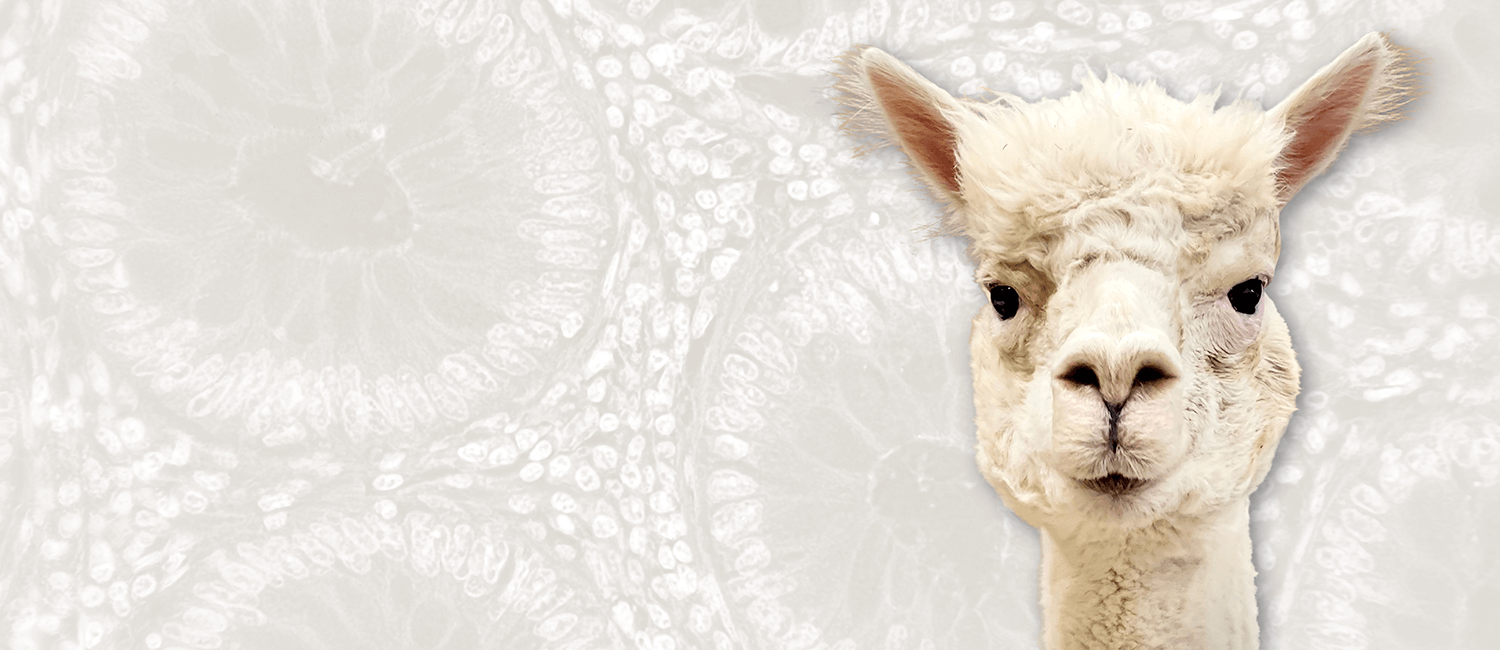
Cindy Troutman has 77 alpacas on her 15.5-acre Maryland farm. She knows each by name and personality and can tell right away when something’s not quite right within the herd. Such was the case with Luminosity, an eight-year-old hembra (female), who went to sleep one night seemingly fine and awoke the next day in a different state.
“She was bumping into everything, and it appeared she couldn’t see,” said Troutman.
Troutman has an on-call field veterinarian, who, in complex cases, refers the alpacas to Penn Vet’s New Bolton Center, just a 2.5-hour drive “up the road.” That’s where one of the farm’s support staff took Luminosity for an eye consultation.
Alpacas are herd animals, so Luminosity’s pal Prissy joined the trip as a companion. It was a prescient decision; Prissy would soon be an eye patient as well.
At New Bolton Center, Dr. Nikki Scherrer, clinical assistant professor of large animal ophthalmology, diagnosed cataracts in Luminosity and recommended surgery. Then she turned her attention to Prissy.
“I’d seen Prissy in the past for other issues,” said Scherrer, who is board certified by the American College of Veterinary Ophthalmologists. “I wasn’t expecting her as a patient this time, but I noticed a red ulcerative lesion on her right eyelid and suspected it was cancerous.”
A biopsy confirmed Scherrer’s suspicions. Prissy had squamous cell carcinoma, a common cancer around the eye in lightly pigmented animals who are especially vulnerable to UV light.
Tricky Location, Innovative Solution
While Luminosity would undergo a traditional surgical procedure to remove her cataracts, Prissy’s case was a bit more complex.
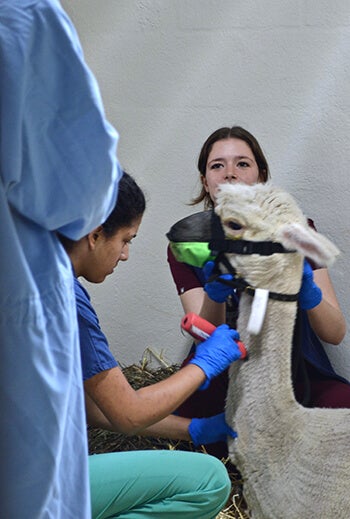
“The cancer was in a location that would be pretty tough to completely remove,” said Scherrer. “We wanted to find a way to get as clean a margin as possible in the least invasive way possible. This was a great case for PDT.”
Commonly used for humans, PDT stands for photodynamic therapy, a treatment that combines light-sensitive drugs with a specific type of light to target and destroy cancer cells.
“We see this type of cancer quite a bit in horses and have had great success with PDT,” said Scherrer.
In 2015, Penn Vet was one of earliest adopters of the human medicine procedure for horses.
“At the time, PDT had been used with dogs, cats, and even birds,” said Scherrer, who was a resident when the School first applied the procedure to a horse. “But it was still early days for larger animals.”
The School collaborated with Penn Medicine, which had PDT equipment and specialists, to treat an American Paint horse named Anita. New Bolton Center borrowed Perelman School of Medicine’s PDT equipment, and Dr. Keith Cengel, director of Penn Medicine’s PDT program, performed the procedure at the large animal hospital.
Since the Penn Medicine-Penn Vet collaboration, PDT has become a more frequent treatment modality on the Kennett Square campus — the School now has its own machine and in-house expertise. And Prissy was its first camelid patient.
Dye, Zap, Destroy
Less invasive than traditional eye surgery, PDT only requires sedation.
Once Prissy was sedated, Scherrer and internal medicine resident Dr. Carla Enriquez, with a team that included residents and staff from anesthesiology, ophthalmology, pharmacology, and nursing, performed PDT using indocyanine green dye. The dye is a “photosensitizer” medication that, when exposed to a specific light wavelength, produces a form of oxygen that kills nearby cells.
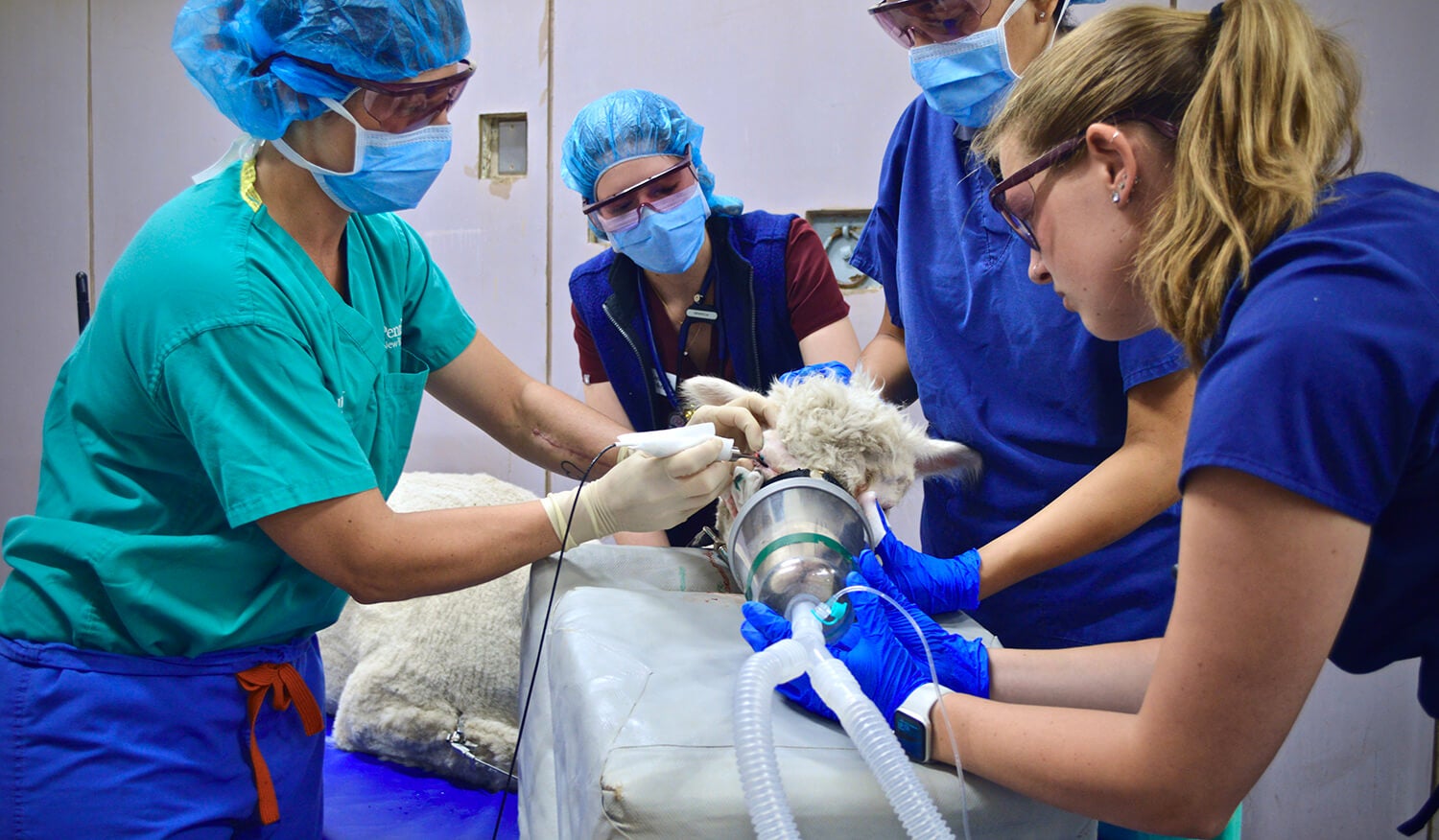
“We inject a dye into the tissue and hit it with light that activates the dye to attack cancer cells in the area,” said Scherrer. “This enables us to get really clean margins and keeps us from unnecessarily damaging healthy tissue.”
Prissy aced her procedure, and the care team was pleased with the outcome. At a follow-up visit, Scherrer would find the same cancer in Prissy’s left eye and address it with PDT with similar positive results.
“Cindy is diligent about caring for her herd, and we’ll keep a close watch on both of Prissy’s eyes,” said Scherrer. “Our goal is to keep both eyes healthy and cancer free.”

An Eye on the Long-Term
PDT is a an increasingly popular treatment for squamous cell carcinomas, but, said Scherrer, there’s little research on its long-term effectiveness. She aims to change that.
“Among cancers, different modalities show short-term success, but what we’re looking for is long-term success,” Scherrer said. “Five years, ten years down the road, are the animals still free of cancer? We want the answer to be yes and are doing the research now to find out.”
Scherrer is leading a study on the roughly 15 horses who’ve had PDT at New Bolton Center. “We’ll track them over time. Typically, squamous cell cancers recur after a few years, so we’re in the early post-treatment years with a lot of our cases. Time will help tell us more about PDT as a viable treatment option for the longterm.”
“This is what I look for from New Bolton Center,” said Troutman, who also celebrated Luminosity’s successful surgery and renewed eyesight. “I know that behind every recommendation is a wealth of knowledge and research – there’s a true commitment to determining the most effective treatments. Everyone at Penn Vet is looking out for the lifelong health and comfort of animals. I trust Dr. Scherrer and the entire staff to do what’s best and to offer the most advanced, most innovative options for care. I feel so lucky to have them just up the road!”
More from Bellwether

From Bird Fractures to Human Shoulders
As a child in Central Pennsylvania, Stephen Peoples, V’84, loved science and the natural world.
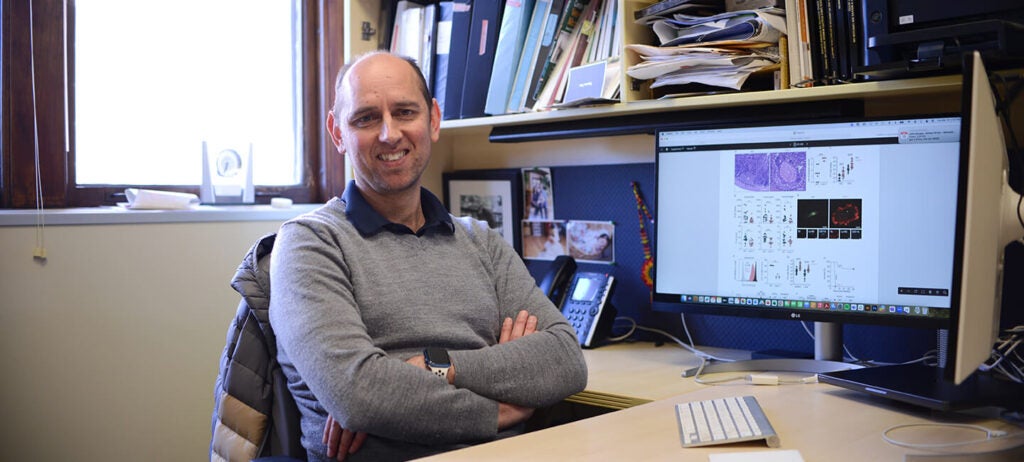
In the Office with Igor Brodsky, PhD
In his Philadelphia-based lab, Igor Brodsky is on a mission to understand how the body recognizes and responds to invading organisms that cause several diseases.
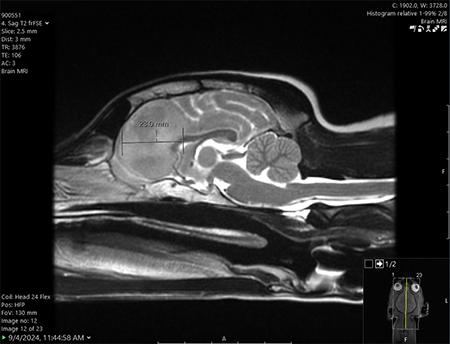
One Tiny Dog’s Outsized Contribution to Brain Surgery
Geddy Lee has lived a big life for a little dog. As a puppy, the tiny terrier mix was abandoned in Mississippi during a high-speed car chase. Rescued by law…
